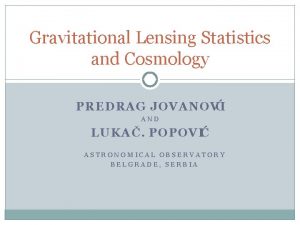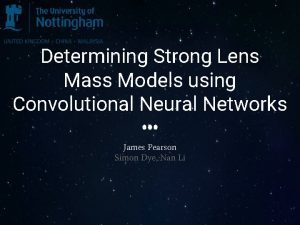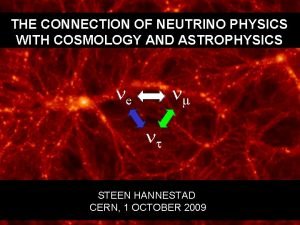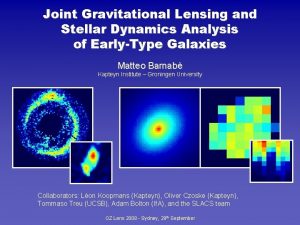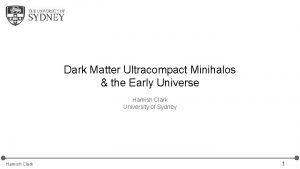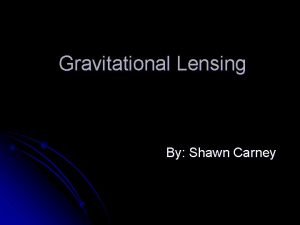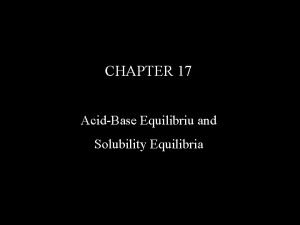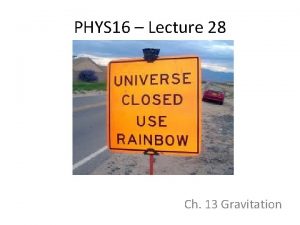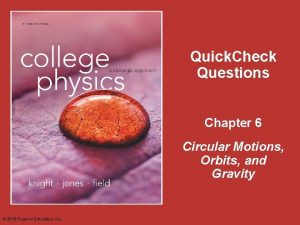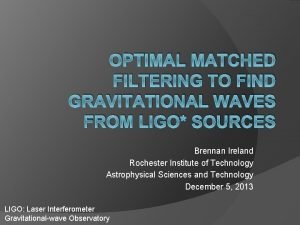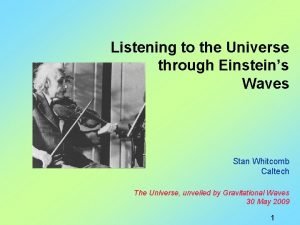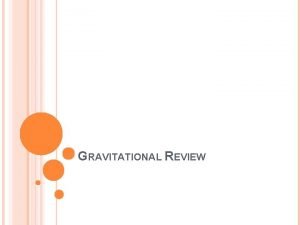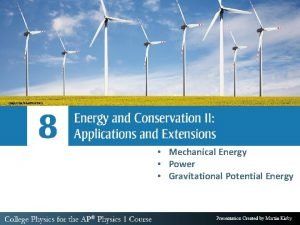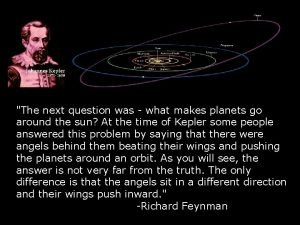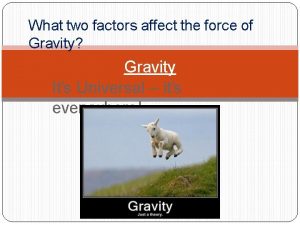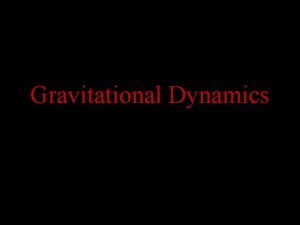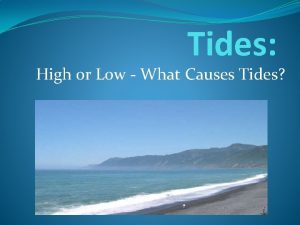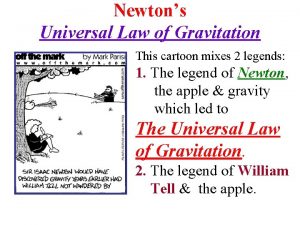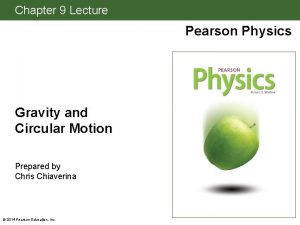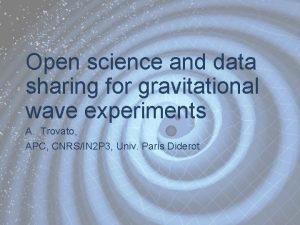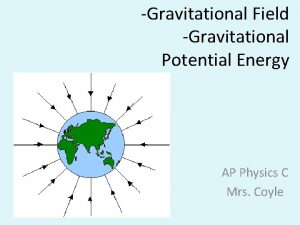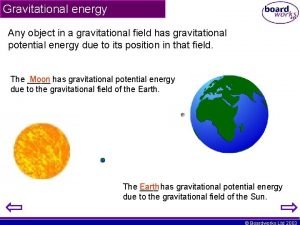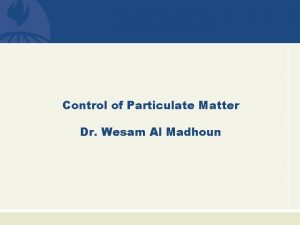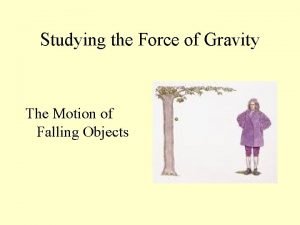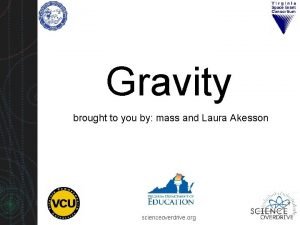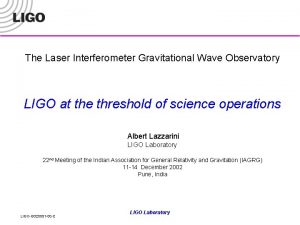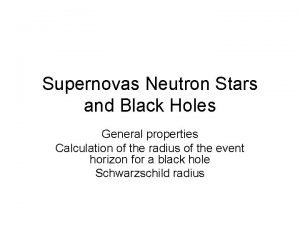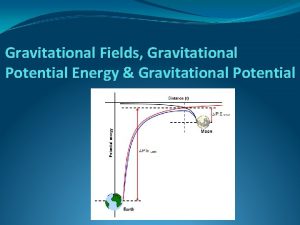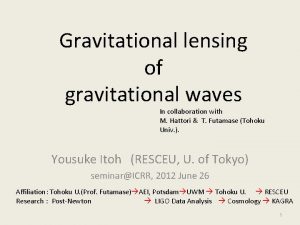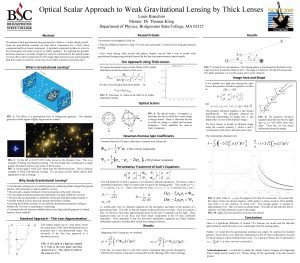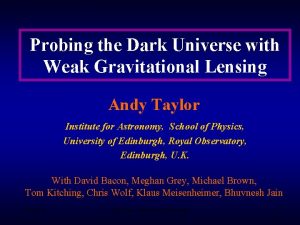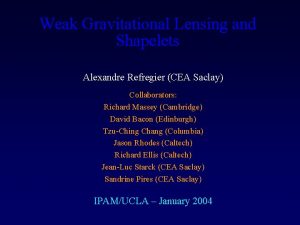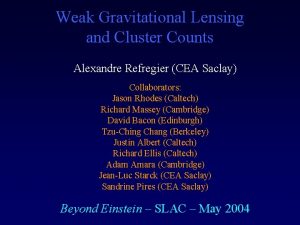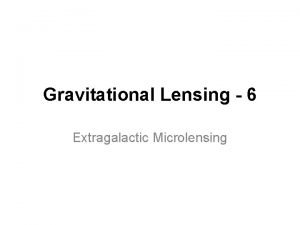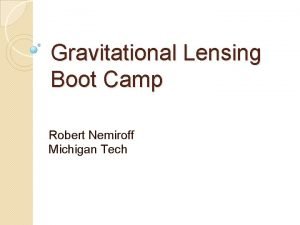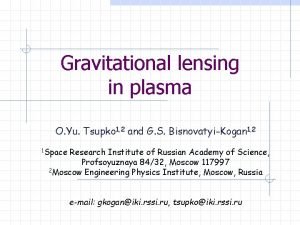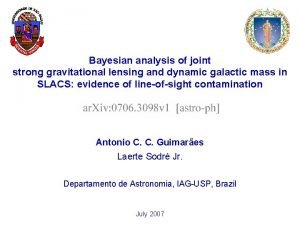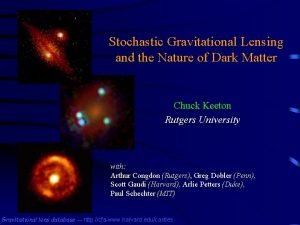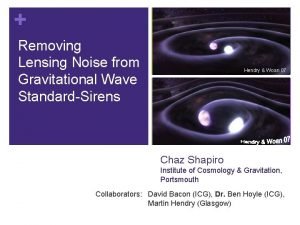weak Gravitational Lensing Weak Lensing 1 Tom Kitching









































- Slides: 41

(weak) Gravitational Lensing

Weak Lensing 1 Tom Kitching

Introduction • Lecture 1 : Introduction to w� eak lensing • Background to the subject • Basic equations and derivations • Lecture 2 : Observing weak lensing • How to observe weak lensing • Overview of simulations • Lecture 3 : Statistics of weak lensing • Cosmic shear • Fisher matrices

Part I : Introduction to Lensing • • Weak lensing Why is weak � lensing useful Brief History of Surveys Current and future cosmological applications

Introduction • What is weak lensing? • strong vs. weak lensing

What is Gravitational Lensing? • •

Kappa > 1 Strong Lensing Multiple Images z

Kappa<< 1 Weak Lensing Local Distortion © NASA z

What can we observe? z z

What can we observe? z •

z z

Why is weak lensing useful? • Low-z equivalent to high-z CMB

Weak Lensing Surveys • What we need • Large field, high resolution • Mostly in optical so far (some radio) • Weak Lensing by LSS First Detected in 2000 • • Bacon et al. Kaiser et al. van Waerbeke et al. Wittman et al.

Kaiser Kasier et al. 2000 Kaiser 2000

Weak Lensing Surveys • Current and on going surveys Euclid DES LSST Ki. DS* Pan-STARRS 1** CFHTLen. S** 05 10 ** complete or surveying * first light 15 20 25


Dark Energy • Current constraints, • Kitching et al, (2007) COMBO-17 2 sqdeg proof of concept • Sembolini et al. (2006) • Kilbinger et al. (2009) CFHTLS 170 sqdeg Preliminary results • Schrabback et al. (2010) COSMOS, 2 sqdeg

Dark Energy • Expect constraints of 1% from Euclid

Dark Matter • Clusters • Halo masses • 3 D DM mapping

Part II: Weak Lensing Foundations • • Lens Equation From General Relativity Derivation of the Distortion Matrix Complex Notation for shear

Geometry • The Born Approximation

The Lens Equation • Lens equation and define the terms Relates True Position to Observed Position

Deflection Angle from GR • Want to know what the deflection angle is

Deflection Angle from GR §

Deflection Angle from GR

Deflection Angle from GR • Equation of motion of deflected light §

GR-Newton Factor of 2 Confirmed in 1919 © R. Massey 2010

The Distortion Matrix • Go back to the lens equation • Every point is mapped to a new point via a shear mapping

The Distortion Matrix • Define a lensing potential • Projected Newtonian potential - Born approximation (linear transform) • Describes how unlensed point maps to lensed point • =0 implies no mass and no lensing

The Distortion Matrix • Define the Distortion Matrix as • Derivatives of the lensing potential • 11, 22, 21, 12

Shear and Convergence • Closer look at the Distortion matrix • Decompose into a trace and traceless part • Define

Shear and Covergence • What shape of distortion does this imply?

Disortion is Elliptical • For a general set of source positions X write the eigen equation • • AX= X (A- )X=0 Characteristic equation : |A- 1|=0 are the eigenvalues

Disortion is Elliptical • Solving the determinant

Disortion is Elliptical • The shear is symmetric under rotations of 180 degrees • Anew=RAold. RT • Distortion is elliptical • “Ellipticity” defined as note |e|< 1 or with r (see next lecture)

Distortion is elliptical 1 2

Complex Notation • Can write shear in complex form • Shear is a spin-weight 2 field • Symmetric under rotations of 180 deg. • Polarisation also an example of spin-2 • Kappa is is spin-wight 0 field (symmetric under any rotation) • Spin 0 = scalar • Spin 1 = vector

Raising and Lowering • Shear as spin 2, Kappa as spin 0 • is a scalar (spin-0) field • Define a complex derivative • A raising/lowering opertato • Kappa and shear are now defined as

Recap • Lensing useful for • Dark energy • Dark Matter • Lots of surveys covering 100’s or 1000’s of square degrees coming online now

Recap • Lensing equation • Local mapping • General Relativity relates this to the gravitational potential • Distortion matrix implies that distortion is elliptical : shear and convergence • Simple formalise that relates the shear and convergence (observable) to the underlying gravitational potential

Next Lecture How do we measure the lensing effect?
 Gravitational lensing
Gravitational lensing Gravitational lens
Gravitational lens Weak lensing
Weak lensing Lensing
Lensing Lensing
Lensing Lensing
Lensing Tom tom go 910
Tom tom go 910 The devil and tom walker symbols
The devil and tom walker symbols Strong acods
Strong acods Difference between strong and weak acids
Difference between strong and weak acids Weak acid and weak base reaction
Weak acid and weak base reaction Centripetal force and gravitational force
Centripetal force and gravitational force Symbol for the gravitational force
Symbol for the gravitational force A coin sits on a turntable
A coin sits on a turntable Matched filtering gravitational waves
Matched filtering gravitational waves Giant wave hear murmurs across universe
Giant wave hear murmurs across universe Gravitational settling chamber
Gravitational settling chamber Units to measure acceleration
Units to measure acceleration Gravitational potential energy formula between two objects
Gravitational potential energy formula between two objects Kepler law formula
Kepler law formula Gpe = mgh
Gpe = mgh Area of convergence
Area of convergence What 2 factors affect the force of gravity
What 2 factors affect the force of gravity Gravitational potential energy
Gravitational potential energy Gravitational settling chamber
Gravitational settling chamber Acceleration due to gravity
Acceleration due to gravity Poisson's equation
Poisson's equation Spring tides occur when
Spring tides occur when Cartoon law of universal gravitation
Cartoon law of universal gravitation Gravitational potential energy vs kinetic energy
Gravitational potential energy vs kinetic energy Applications of gravitational force
Applications of gravitational force Gravitational wave hear murmurs universe
Gravitational wave hear murmurs universe Gravitational wave open science center
Gravitational wave open science center Types of energy
Types of energy Gravitational potential energy
Gravitational potential energy Wesam al madhoun
Wesam al madhoun What is gravity and friction
What is gravity and friction Gravitational mass vs inertial mass
Gravitational mass vs inertial mass Gravitational wave
Gravitational wave Thermal energy formula
Thermal energy formula Gravitational force is a
Gravitational force is a Escape velocity of neutron star
Escape velocity of neutron star
